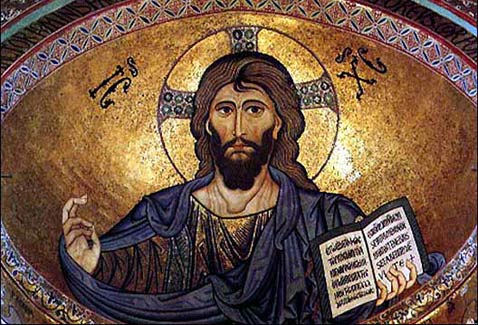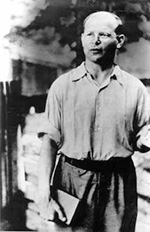| .In
Jesus Christ we have faith in the
incarnate, crucified and risen God. In
the incarnation we learn of the love of
God for his creation. In the crucifixion
we learn of the judgment of God upon all
flesh. And in the resurrection
we learn of God's will for a new world.
There could be no greater error
than to tear these three elements apart –
for each of them comprises the
whole. It is quite wrong to establish a
separate theology of the incarnation,
a theology of the cross, or a theology of
the resurrection, each in opposition
to the others, by a misconceived
absolutization of one of these parts.
It is equally wrong to apply the same
procedure to a consideration of the
Christian life. A Christian ethic
constructed solely on the basis of the
incarnation would lead directly to the
compromise solution. An ethic which
was based solely on the cross or the
resurrection of Jesus would fall victim
to radicalism and enthusiasm. Only in the
unity is the conflict resolved.
Jesus
Christ the man – this means that God
enters
into created reality. It means that we
have the right and the obligation
to be men before God. The destruction of
manhood, of man's quality as man
(Menschsein), is sin, and is
therefore a hindrance to God's
redemption
of man. Yet the manhood (Menschsein)
of Jesus Christ does not mean
simply the corroboration of the
established world and of the human
character
as it is. Jesus was man "without sin"
(Hebrews 4.15) – that is what is
decisive. Yet among men Jesus lived in
the most utter poverty, unmarried,
and he died as a criminal. Thus the
manhood of Jesus implies already a
twofold condemnation of man, the
absolute condemnation of sin and the
relative
condemnation of the established human
orders. But even under this condemnation
Jesus is really man, and it is his will
that we shall be men. He neither
renders the human reality independent
nor destroys it, but he allows it
to remain as that which is before the
last, as a penultimate which requires
to be taken seriously in its own way,
and yet not to be taken seriously,
a penultimate which has become the outer
covering of the ultimate.
Jesus
Christ the crucified – this means that
God pronounces its final condemnation on
the fallen creation. The rejection
of God on the cross of Jesus Christ
contains within itself the rejection
of the whole human race without
exception. The cross of Jesus is the
death
sentence upon the world. Man cannot
glory now in his humanity, nor the
world in its divine orders. The glory of
men has come now to its last end
in the face of the Crucified, bruised
and bloody and spat upon. Yet the
crucifixion of Jesus does not simply
mean the annihilation of the created
world – but under this sign of death,
the cross, men are now to continue
to live, to their own condemnation if
they despise it, but to their own
salvation if they give it its due. The
ultimate has become real in the
cross, as the judgment upon all that is
penultimate, yet also as mercy
towards that penultimate which bows
before the judgment of the
ultimate.
Jesus
Christ who rose again – this means that
God out of his love and omnipotence sets
an end to death and calls a new
creation into life, imparts new life.
"Old things are passed away" (2
Corinthians
5.17). "Behold, I make all things new"
(Revelation 21.5). Already in the
midst of the old world, resurrection has
dawned, as a last sign of its
end and of its future, and at the same
time as a living reality. Jesus
rose again as a man, and by so doing he
gave men the gift of the resurrection.
Thus man remains man, even though he is
a new, a risen man, who in no way
resembles the old man. Until he crosses
the frontier of his death, even
though he has already risen again with
Christ, he remains in the world
of the penultimate, the world into which
Jesus entered and the world in
which the cross stands. Thus, so long as
the earth continues, even the
resurrection does not annul the
penultimate, but the eternal life, the
new life, breaks in with ever greater
power into the earthly life and wins
its space for itself within it.
[Excerpt
from Ethics, first published in
German by Chr. Kaiser Verlag, Munich
1949. English translation by Neville
Horton Smith © SCM Press Ltd
London 1955.]
|

